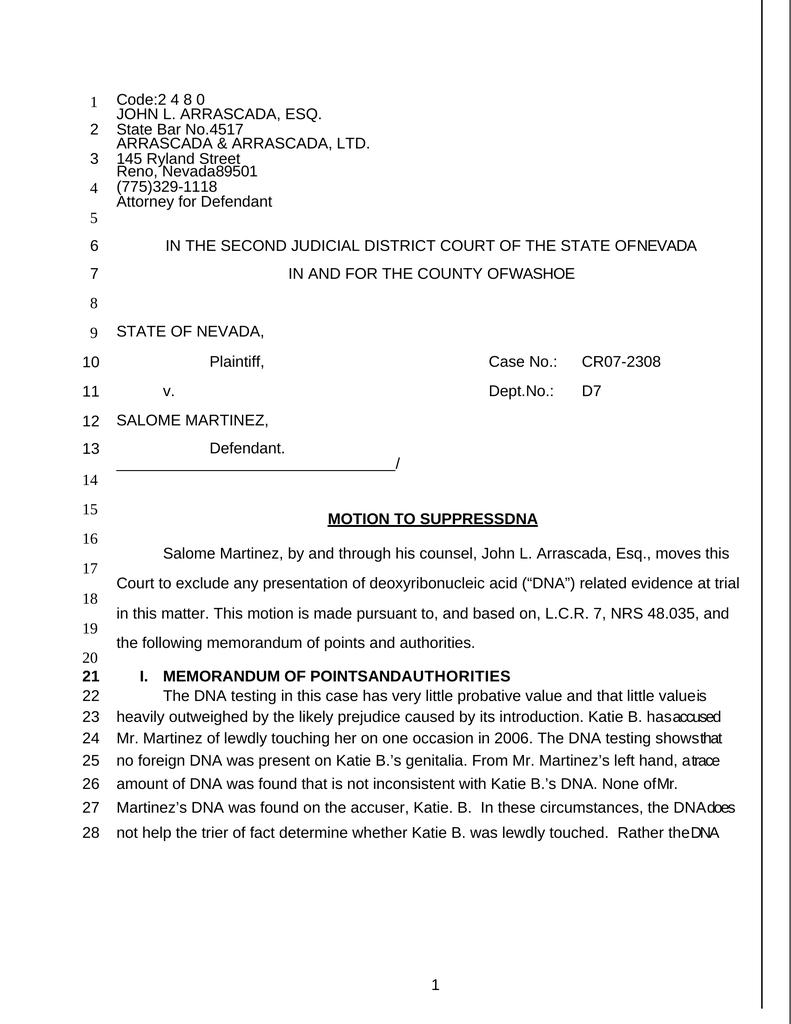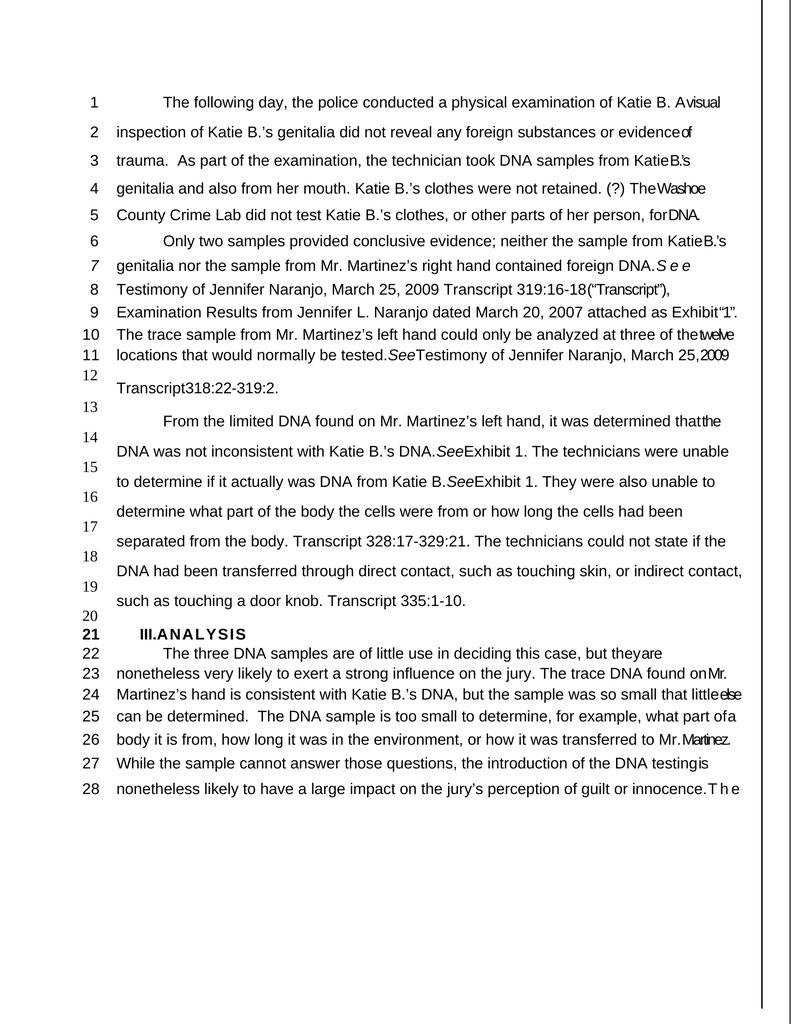Description
Motions the Court to exclude any DNA related evidence at trial in this matter.
DNA evidence can become contaminated when DNA from another source gets mixed with DNA relevant to the case. For this reason, investigators and laboratory personnel should always wear disposable gloves, use clean instruments, and avoid touching other objects, including their own body, when handling evidence.
Forensic evidence increasingly includes genetic fingerprinting, but researchers worry that juries may put too much stock in the results. Since the advent of DNA testing, it’s solved cold cases, connected crimes committed in different jurisdictions and even freed innocent men from death row.
One of the most reliable forms of evidence in many criminal cases is in our genes, encoded in DNA (deoxyribonucleic acid). DNA evidence can be collected from blood, hair, skin cells, and other bodily substances. It can even be used to solve old crimes that occurred prior to the development of DNA-testing technology.
Compared to fingerprinting or eyewitness testimony, which both have inherent flaws and inaccuracies, DNA evidence is a highly effective way to match a suspect to biological samples collected during a criminal investigation.





